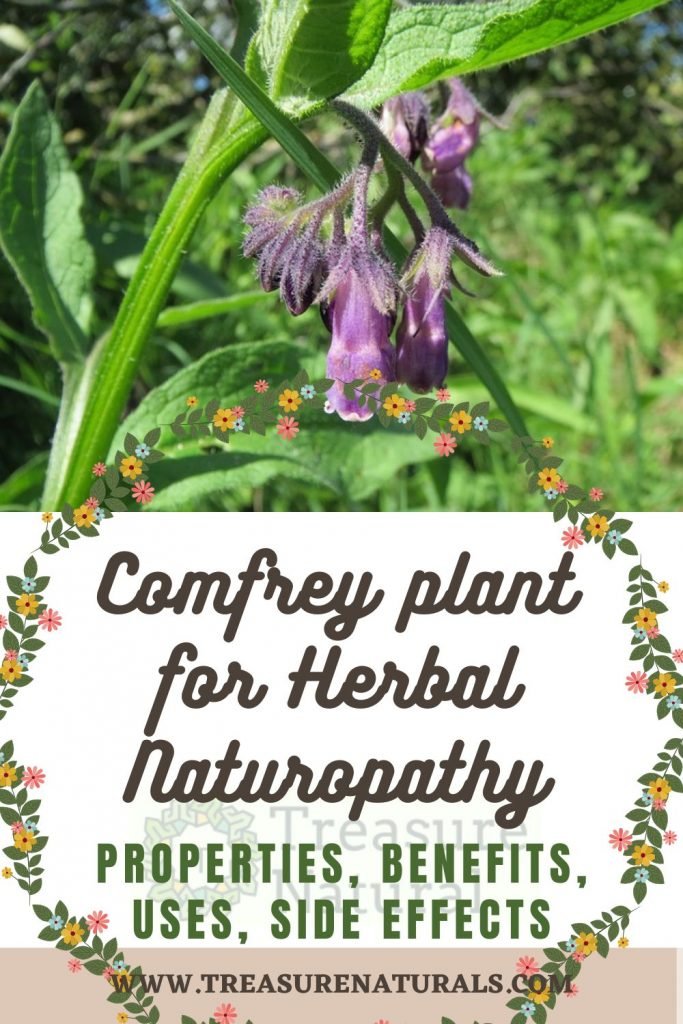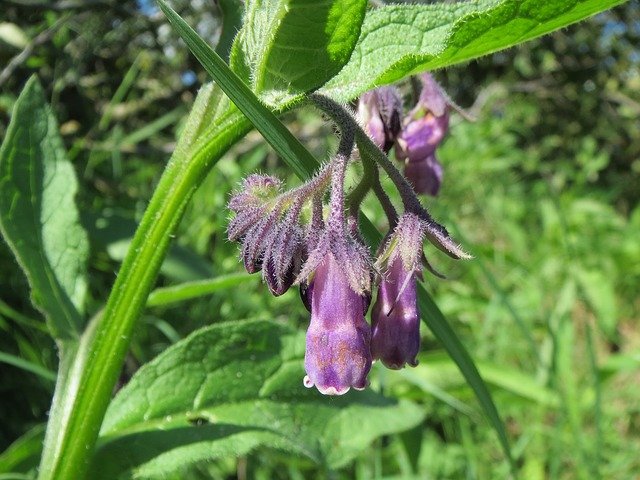
Comfrey is a medicinal plant with an anti-inflammatory and healing action useful against digestive disorders, diarrhea, arthrosis and muscle cramps. Let’s find out better.
Properties of the comfrey
The comfrey has mainly an anti-inflammatory and healing action.
It can be used in the form of an infusion with an anti-inflammatory effect, which is useful against diarrhea, digestive problems, colitis and ulcers.
Likewise, it can be used against cramps, mumscular pains and neuralgia, thanks to its astringent action that helps the muscles to relax.
However, Comfrey also contains a substance that is toxic to the liver, so its use must be strictly controlled and limited.
The active ingredients present in comfrey, are included in the activation of the renewal of muscle and bone cells, thanks to the high presence of allantoin, which accelerates the formation of new cells, whether it is bone mass or skin.
It has also been shown that comfrey accelerates the healing of superficial wounds, is effective in cases of cracking, itching, peeling or insect bites, as well as in the treatment of dry coughs, inflammation of the oral cavity and digestive disorders.
In case of oral problems such as stomatitis , sensitive and bleeding gums, canker sores and sore throats, it is possible to resort to gargle made with natural comfrey-based mouthwashes .
How to use
In the autumn period, the root of the plant is harvested since it is the period in which the level of allantoin contained is greatest. The leaves, on the other hand, are harvested in the summer
Comfrey can be used to make poultices, decoctions, infusions, mother tinctures.
- Astringent and healing : comfrey, applied on gauze compresses, allows you to heal bruises, sprains and fractures. It can also be used to treat wounds and pressure sores.
- Anti-inflammatory : reduces muscle contractions and strains.
- Soothing : As a poultice, comfrey cleanses the lungs and treats dry coughs. In gargling or rinsing, it acts on lesions and inflammations of the oral cavity.
- Comfrey is used for skin care and health, as it has an emollient and softening action, capable of treating acne, dry skin, psoriasis, insect bites and peeling.
Contraindications of comfrey
Comfrey is contraindicated in children, pregnant or breastfeeding women, and in subjects suffering from liver disease.
Description of the plant
Comfrey ( Symphytum officinal e) is a perennial herbaceous plant belonging to the Boraginaceae family.
Comfrey is a plant that can reach 130 centimeters in height, has thick leaves and the roots are able to free themselves in the soil up to 180 centimeters in length.
The floral stems welcome, starting from mid-May, bell-shaped flowers, ranging in color from white to mauve, depending on the variety.
Habitat of the comfrey
Comfrey is easy to find in swampy places, in ditches, in canals and peat bogs, but also in wet meadows and on the edges of woods. These plants can be found both in the hills and in the mountains up to an altitude of 1300 meters.
Background

The origin of the name is graca, symphuo and means to weld, unite.
At the origin of this name there is an assumed healing property of bone fractures of some parts of this plant.






